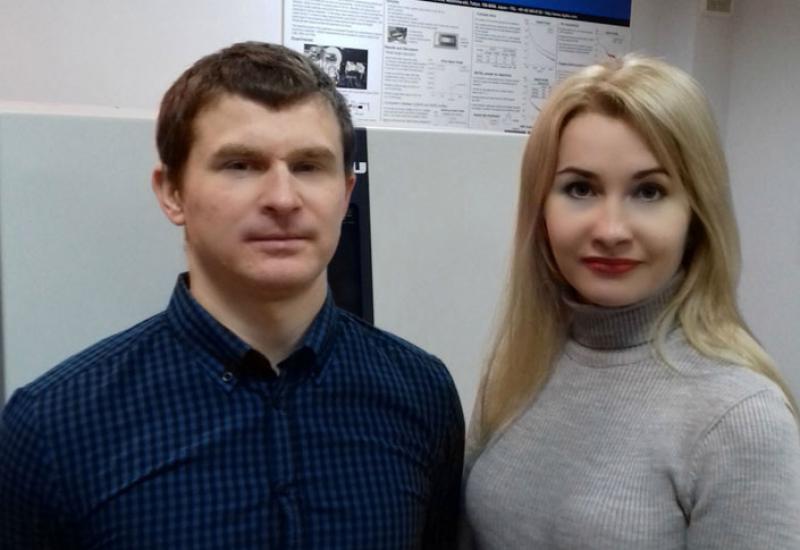At the Department of High-Temperature Materials and Powder Metallurgy, Senior Lecturer, Ph.D. Iiyna Yuriivna Trosnikova, and Senior Researcher, Ph.D. Yevhen Vasylovych Solodkyi created new superhard ceramic materials, based on tungsten carbide, boron suboxide and molybdenum borides, for operation in extreme conditions. The proposed material has increased strength for efficient operation in extreme conditions of simultaneous impact of large dynamic loads, abrasive wear, high temperatures and aggressive environment. The authors of the project were awarded the prize of the President of Ukraine as young scientists carrying out promising scientific research.
The scientists first developed the physico-chemical bases for obtaining superhard ceramic materials, which consist in managing the kinetic parameters of the process of formation of microstructure and phase composition during the crystallization from the melt and electro-sintering of alloys of Mo-Si-B, WC-W2C and B-O-C. Also, for the first time, new semi-reinforced superhard composite materials with 1.5 times higher hardness. 2 times higher durability and 3 times higher wear resistance were created. New ultra-light ceramic materials of the B-O-C (В6О, В6О-В4С) system with hardness exceeding 40 GPa and crack resistance of about 5 MPa•м1/2which is higher than world analogues by 35% and 25% respectively.
The technical and economic appropriateness of applying wear-resistant coatings from the reinforced molybdenum-doped alloy of WC-W2C on the working surfaces of press screws has been proved by means of industrial testing of the experimental batch of powder at "Mizhhaluzevyi naukovo-vyrobnychyi tsentr "Epsilon LTD" LLC (Ivano-Frankivsk). For the first time, developed alloys are recommended to be implemented in industrial production.
At the Yuzhnoye State Design Office, located in Dnipro, the created ceramic reinforced composites of the Mo-Si-B system have been successfully tested as materials for the chamber housing of the liquid apogee engine RD840 which effectively work in temperature range of 1200-1600°C, increasing operating temperatures by 20%, reducing the specific gravity of constructions by 27% and the negative impact on the environment and demonstrating their economic (20-30%), energetic, ecological and technological efficiency.
The alloys of the B-O-C system are used to increase the hardness and density of the elements of ceramic plates of the 6-th class security armor, which have been successfully tested on the basis of the Central Research Institute of Armament and Military Equipment of the Armed Forces of Ukraine. The alloys of the B-O-C system are used for the manufacture of the high-strength ceramic air collector edges of a direct-air jet engine (operating temperatures 1200 °C), which have been successfully tested within the framework of the agreement between Igor Sikorsky Kyiv Polytechnic Institute and the Yuzhnoye State Design Office.
The scientists-mathematicians of Igor Sikorsky Kyiv Polytechnic Institute welcome wide prospects and successfully implement their innovations.

